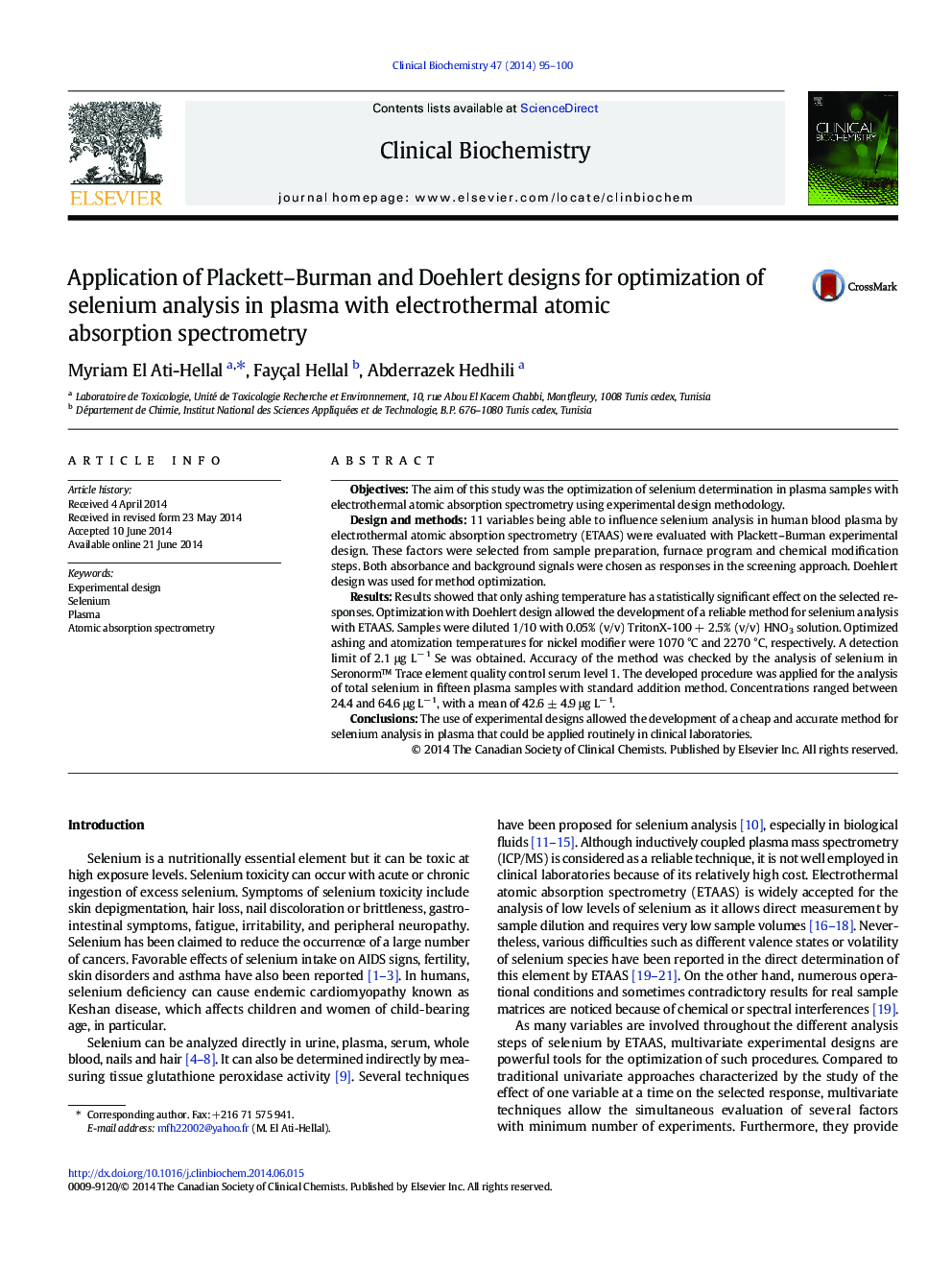| کد مقاله | کد نشریه | سال انتشار | مقاله انگلیسی | نسخه تمام متن |
|---|---|---|---|---|
| 1969100 | 1059760 | 2014 | 6 صفحه PDF | دانلود رایگان |

ObjectivesThe aim of this study was the optimization of selenium determination in plasma samples with electrothermal atomic absorption spectrometry using experimental design methodology.Design and methods11 variables being able to influence selenium analysis in human blood plasma by electrothermal atomic absorption spectrometry (ETAAS) were evaluated with Plackett–Burman experimental design. These factors were selected from sample preparation, furnace program and chemical modification steps. Both absorbance and background signals were chosen as responses in the screening approach. Doehlert design was used for method optimization.ResultsResults showed that only ashing temperature has a statistically significant effect on the selected responses. Optimization with Doehlert design allowed the development of a reliable method for selenium analysis with ETAAS. Samples were diluted 1/10 with 0.05% (v/v) TritonX-100 + 2.5% (v/v) HNO3 solution. Optimized ashing and atomization temperatures for nickel modifier were 1070 °C and 2270 °C, respectively. A detection limit of 2.1 μg L− 1 Se was obtained. Accuracy of the method was checked by the analysis of selenium in Seronorm™ Trace element quality control serum level 1. The developed procedure was applied for the analysis of total selenium in fifteen plasma samples with standard addition method. Concentrations ranged between 24.4 and 64.6 μg L− 1, with a mean of 42.6 ± 4.9 μg L− 1.ConclusionsThe use of experimental designs allowed the development of a cheap and accurate method for selenium analysis in plasma that could be applied routinely in clinical laboratories.
Journal: Clinical Biochemistry - Volume 47, Issue 15, October 2014, Pages 95–100